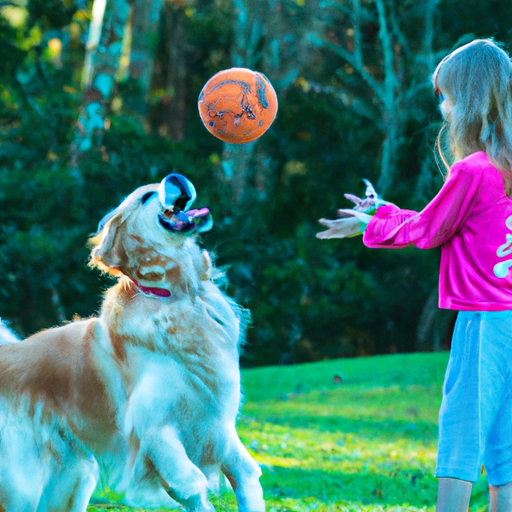Playing with your dog can be a joyous experience for both of you. It strengthens your bond, provides physical and mental exercise, and instills good behaviors in your furry friend. Here’s how you can make playtime with your dog more fun and engaging.
Understanding Your Dog’s Play Preferences
Every dog is unique, and so are their play preferences. Some dogs may enjoy fetch, while others prefer tug-of-war or hide-and-seek.
To understand your dog’s play preferences:
- Observe their behavior during playtime.
- Experiment with different types of toys and games.
- Note their reactions to each game or toy.
Remember, your dog’s breed can also influence their play preferences. For instance, retrievers usually enjoy fetch, while terriers might prefer digging games.
Choosing the Right Toys
Choosing the right toys for your dog can make playtime more enjoyable and safe. Here are some factors to consider:
- Size of the Toy: The toy should be large enough that your dog can’t swallow it, but small enough for them to carry around.
- Material: The toy should be made of durable, non-toxic materials that can withstand your dog’s bite.
- Type: Some popular types of toys include balls, squeaky toys, and chew toys.
| Type of Toy | Best For |
|---|---|
| Balls | Fetch games |
| Squeaky toys | Interactive play |
| Chew toys | Teething puppies |
Engaging in Interactive Play
Interactive play involves games that require both you and your dog to participate. Some popular games include:
- Fetch: Throw a ball or toy and have your dog retrieve it.
- Tug-of-War: Use a rope or tug toy and let your dog pull against you.
- Hide-and-Seek: Hide from your dog and let them find you.
Remember to always maintain control during playtime. If your dog becomes too aggressive or overexcited, stop the game and give them time to calm down.
Training Through Play
Play can also be a great opportunity to teach your dog new commands or reinforce existing ones.
For instance, during a game of fetch, you can teach commands like “drop it” or “leave it”. Always use positive reinforcement, such as treats or praises, to reward your dog’s good behavior during play.
Ensuring Safety During Playtime
Safety should always be a priority during playtime. Here are some tips to keep your dog safe:
- Supervise playtime: Always keep an eye on your dog while they’re playing with toys or other dogs.
- Check toys regularly: Inspect your dog’s toys for any signs of wear and tear that could pose a choking hazard.
- Provide breaks: Give your dog breaks during playtime to prevent exhaustion or overheating.
Incorporating Physical Exercise
Physical exercise is an important aspect of play.
Activities like running, jumping, or agility courses can help keep your dog fit and healthy. Remember to adjust the level of physical activity based on your dog’s age, breed, and health condition.
Understanding the Benefits of Play
Playing with your dog has numerous benefits:
- It strengthens your bond with your dog.
- It provides mental stimulation and physical exercise.
- It helps teach your dog good behavior.
- It can help reduce behavioral issues.
FAQ Section
Q: What if my dog doesn’t seem interested in play?
A: Not all dogs have the same interest in play. Try different toys, games, and types of play to see what your dog enjoys. If your dog still shows no interest, consult a vet or a dog behaviorist.
Q: How much playtime does my dog need?
A: It depends on your dog’s age, breed, and health. Generally, dogs need at least 30 minutes to 2 hours of exercise each day. This can be broken down into play sessions throughout the day.
Q: Can I play rough with my dog?
A: While some dogs enjoy rough play, it’s important to set boundaries to prevent accidents or aggressive behavior. Always supervise playtime and stop the game if it gets too rough.
Q: What if my dog gets too aggressive during play?
A: If your dog gets aggressive, stop the game immediately. Give your dog time to calm down before resuming play. If the aggressive behavior continues, consult a professional dog trainer or behaviorist.
Remember, play is an essential part of your dog’s life. It’s not just about fun and games, but also about bonding, learning, and staying healthy. So, go ahead and make the most of playtime with your furry friend.



